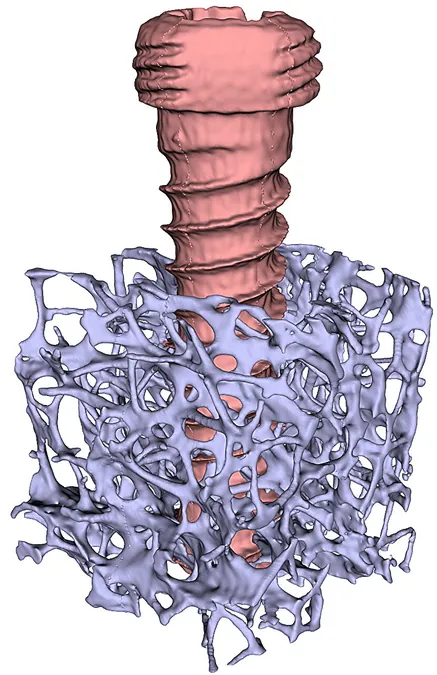
Revolutionizing Bone Surgery: New Study Reveals Optimal Screw Placement to Prevent Failures
2025-06-03
Author: Ming
Metal Screws and Their Risks in Bone Surgery
Metal screws are essential tools in bone surgery, yet they can fail due to everyday stresses, leading to complications such as loosening or breakage. Until recently, predicting these risks has been a challenge because existing testing methods couldn't replicate the real physical stresses within the human body.
Groundbreaking Research Changes the Game
A groundbreaking study published in the Journal of the Mechanical Behavior of Biomedical Materials has unveiled a way to predict screw failure before surgery through precise measurements of bone structure. This research could transform orthopedic procedures, enhancing surgical reliability and reducing complications.
Led by the Division of Biomechanics at Karl Landsteiner University of Health Sciences (KL Krems), researchers utilized high-resolution micro-CT scans to analyze 100 bone samples under 10 different loading scenarios. The study identified two key factors that account for up to 90% of the variation in screw stability.
Unlocking the Secrets of Bone Structure
The study's lead, Ass.-Prof. DI Dr. Andreas Reisinger, explains, "Our goal was to determine if we could accurately predict screw failure before implantation—and we succeeded, with astonishing precision." By analyzing bone structures around intended implant sites using advanced micro-CT scanning techniques, the researchers subjected screws to various load tests simulating everyday activities, such as walking and lifting.
The findings were clear: bones with higher volume and density significantly provided more support for screws, regardless of the type of load applied.
Innovative Testing Using Real-Life Scenarios
The study tested 100 pig bone samples, which closely resemble human bones. Researchers examined the screws under different conditions, including tension, compression, shear, and mixed loads. Six bone parameters were measured, with bone volume (BV) and the ratio of bone tissue to total tissue (BV/TV) emerging as crucial indicators of screw failure.
Predictive Models Set a New Standard
The research team developed two statistical models based on the micro-CT data and observed screw failure forces. One model focused solely on bone volume, while the other combined various parameters. Both demonstrated remarkable predictive accuracy, explaining 70-90% of variability in failure forces.
Prof. Reisinger emphasized, "We were able to clearly confirm our calculations, enabling predictions that could guide surgeons in identifying the most stable screw placements—potentially reducing the risks of loosening or fractures in the future."
A New Era for Personalized Orthopedic Solutions
The innovative research at KL Krems opens exciting new opportunities for personalized orthopedics, particularly for older adults or patients with osteoporosis. With more precise predictions, surgeons can ensure safer and more effective fixation of damaged bones, marrying engineering with medicine to improve treatment outcomes significantly.

 Brasil (PT)
Brasil (PT)
 Canada (EN)
Canada (EN)
 Chile (ES)
Chile (ES)
 Česko (CS)
Česko (CS)
 대한민국 (KO)
대한민국 (KO)
 España (ES)
España (ES)
 France (FR)
France (FR)
 Hong Kong (EN)
Hong Kong (EN)
 Italia (IT)
Italia (IT)
 日本 (JA)
日本 (JA)
 Magyarország (HU)
Magyarország (HU)
 Norge (NO)
Norge (NO)
 Polska (PL)
Polska (PL)
 Schweiz (DE)
Schweiz (DE)
 Singapore (EN)
Singapore (EN)
 Sverige (SV)
Sverige (SV)
 Suomi (FI)
Suomi (FI)
 Türkiye (TR)
Türkiye (TR)
 الإمارات العربية المتحدة (AR)
الإمارات العربية المتحدة (AR)